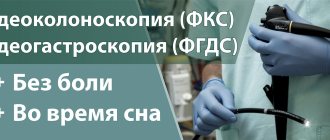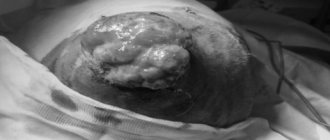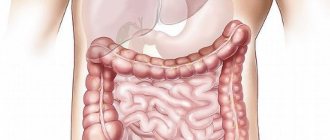- Home /
- Articles /
- Gastric ballooning
Gastric ballooning is a technically simple, non-surgical, non-drug treatment for obesity. An inflatable balloon, a biocompatible silicone ball with a valve, is inserted into the gastric cavity using an endoscope—a fiber-optic probe with a microvideo camera. It is filled with sterile saline solution (standard volume - 500 ml).
A filled intragastric (intragastric) balloon occupies the internal volume of the stomach and leaves less space for food (about 100 ml). Already after a small portion eaten, the brain receives a signal of satiety. The amount of calories consumed is reduced to the lower physiological norm. The procedure is reversible - after achieving the treatment goals, the balloon is removed (to prevent wear of the walls under the influence of gastric juice - after 6 months). If necessary, 2 months after removing the old balloon, a new one can be installed.
Benefits of Gastric Ballooning
- It is performed without incisions - through the mouth and esophagus.
- Does not disrupt the physiology of the digestive tract and does not reduce the absorption of nutrients.
- Allows you to avoid relatively more severe bariatric surgeries, such as gastric suturing.
- The result of the procedure is based on natural reflex reactions and therefore does not require volitional efforts on the part of the patient.
- Aimed at normalizing eating behavior - a person gets used to eating in small portions.
- It is not accompanied by anesthetic and surgical risks.
- May be prescribed to patients with contraindications to bariatric surgery.
The disadvantage of this method is that ballooning may be less effective for weight loss compared to bariatric surgery.
Cylinder installation method
Intragastric balloon placement is an endoscopic procedure and is performed under gastroscopy guidance. It is carried out with complete anesthesia.
The patient is placed on his left side or back. The contents of the package with the BIB system (bariatric intragastric balloon) are laid out on the table. The case in which the cylinder is located is lubricated with a special gel. If the balloon is filled with water, then it is prepared in a container and methylene blue is added. This dye is necessary in order to promptly determine the depressurization of the cylinder (if damaged by rough bones, nut shells, etc.); if this happens, the urine takes on a blue color - the color of the dye - and this is a signal to remove the cylinder, which is in a reduced volume can pass further into the intestine and cause acute intestinal obstruction.
Before inserting the balloon, a gastroscopy is performed to determine whether the patient has any contraindications.
The balloon is inserted through the mouth. A syringe is connected to the catheter and the balloon is inflated through it, monitoring the process using vision. As the balloon inflates, the cover bursts and the balloon is released. When the entire volume of the balloon is filled (400-700 ml), the catheter is pulled out of it with a sharp movement. At the same time, the valve on the wall of the cylinder closes. The balloon itself takes the form of a ball, which is freely located in the stomach.
After this, the catheter along with the gastroscope is removed from the stomach. The procedure is completed.
Contraindications
- BMI ≤ 30.
- Anatomical restrictions due to previous operations.
- Acute gastrointestinal pathologies - esophagitis, ulcers, Crohn's disease, oncology.
- High risk of gastric bleeding - varicose veins of the esophagus or stomach, telangiectasia, stenosis, etc.
- Hiatal hernia.
- Diverticula and strictures of the esophagus and pharynx.
- Severe diseases of the kidneys, liver, lungs.
- Contraindications to gastroscopy.
- Alcoholism, drug addiction, mental disorders.
- Low discipline.
- Taking anticoagulants or steroids.
- Pregnancy and lactation.
- Age up to 18 years.
FAQ
B: How much can I lose with this procedure?
O
: You will be able to significantly reduce your weight, by an average of 15-20 kg, but the results depend on how much you follow the program and change your eating habits.
Q: Will I feel the balloon in my stomach?
O
: You may feel discomfort in the first days after the procedure. Then all you will feel is saturation.
Q: Are there any side effects or complications that may occur?
O
: The first three days will be very difficult. Abdominal cramps, nausea and vomiting are normal, expected reactions. It is very important to follow your doctor's advice and drink plenty. You can get medication to relieve discomfort.
Q: How long does the recovery process take after the procedure?
O
: Plan for at least three days of passive rest for recovery. You can continue your daily life depending on how quickly your body gets used to the balloon.
Q: How do weight loss results compare to other nutrition programs?
O
: You are expected to lose more weight with the BIB program. Because the bladder provides a feeling of fullness, you will be able to better control your food intake and make healthy choices.
Q: Does the cylinder restrict any activity?
O
: Don't tire yourself out during the first week after the procedure. Once your body has adjusted to the balloon, you can resume your normal activities. We recommend starting regular training, this will help you achieve success.
Q: What happens if the cylinder starts to leak?
O
: This phenomenon is recognized by the greenish tint of urine. Violation of the integrity of the cylinder wall is rare, but the situation can be serious. If you notice a change in the color of your urine, contact your doctor immediately. If the balloon loses its seal, it is most often removed naturally, but sometimes it must be removed by a doctor.
B: Can I drink alcohol?
O
: Alcohol can be consumed in moderation.
B: Can I eat whatever I want? Are there any food restrictions?
O
: You won't want to eat as much as you did before. In addition, if you eat fatty foods or sweets, your health will worsen. With a balloon in your stomach, overeating can be dangerous and cause serious health problems.
Q: How is the balloon removed?
O
: The balloon is removed in the same way as it was installed - through the mouth. The 20-minute procedure is performed under intravenous or general anesthesia.
The balloon installation procedure is performed by Dr. Rein Adamson , one of Estonia's leading bariatric surgeons.
Watch the video about Victoria, who had mini gastric bypass surgery with Dr. Rain Adamson and lost 42 kg in 12 months!
How does the procedure work?
The procedure can be performed without anesthesia, but in order to eliminate the patient’s emotional experiences, he is put into a medicated sleep. The balloon is placed under the control of a microvideo camera, which is inserted into the stomach through the esophagus. Medical pigment is added to the saline solution for timely control of leaks. The solution is injected with a syringe through a probe. When the required volume is reached, the valve is closed and the probe is removed. The duration of the procedure is up to 30 minutes.
If you notice that the urine has turned blue, then inform your doctor, he will make a correction. This situation does not pose any danger.
How the intragastric balloon works
The main effect is achieved by replacing the space in the stomach with a balloon, resulting in less space for food. The size of the stomach can vary significantly depending on height, gender, and heredity. The approximate volume of the stomach is about 1.5 liters. The volume of the balloon placed in the stomach is 650 ml, the estimated percentage of the space to be replaced is 50%.
Recovery period
If the patient wishes, he can leave the clinic after 2 hours. However, it is recommended to spend the first night in the clinic. To stop attacks of nausea and vomiting, the patient is administered antiemetic drugs.
In the first 3-4 days there may be a feeling of discomfort, then the body adapts and it goes away. During this time, semi-liquid pureed food is recommended. You need to eat and drink slowly, using teaspoons. Intense physical activity should be avoided during the day. You can return to normal training in a week.
After gastric ballooning, split meals are recommended at least 5 times a day. High-calorie foods are excluded from the menu. The diet is based on lean meat and fish, vegetables, whole grain cereals, vegetable oils, fruits, and dairy products.
The diet can be normal, but the best results are achieved with a caloric intake of up to 1500 kcal per day: with a normal diet, the average weight loss over six months is up to 10 kg, with a limited diet - up to 20. It is recommended to regularly consult a nutritionist.
Next six months
After the first two weeks, your body has become acclimated to the CYLINDER IN THE STOMACH and you are following a regular eating plan and going about your normal activities.
Over the next six months, it is extremely important to consult with your doctor so that he can evaluate the success of your weight loss procedure. This period is important to prepare you for not regaining the weight you lost after the balloon is removed. Do not forget that the balloon in the stomach is just a “learning aid”, like auxiliary wheels on a bicycle. The intragastric balloon gives you the opportunity to change your lifestyle so that you can maintain your ideal weight.
The following guidelines will help you succeed:
- Keep a diary of food and active physical activity.
- Turn your new eating plan into a long-lasting lifestyle. While the balloon is in your stomach, monitor how you feel closely and report any changes. If nausea does not go away within the first couple of days, contact your doctor.
Intragastric balloon as a method of weight loss
The Health 365 Clinic in Yekaterinburg will help you
lose weight using intragastric balloon This method of weight loss is common in Europe among both women and men. Weight reduction occurs by installing a balloon specially designed for this purpose under the control of an endoscope into the stomach and inflating the balloon with air in a volume of 550-720 cm³.
How does an intragastric balloon affect weight loss?
By filling part of the stomach volume, the balloon promotes earlier satiety during meals (by influencing satiety receptors located on the walls of the stomach), and due to quantitative restriction in food, the patient loses weight.
What is body mass index BMI?
This is a value that allows you to assess the degree of correspondence between a person’s mass and his height and thereby, indirectly, assess whether the mass is insufficient, normal or excessive. It is important for determining indications for treatment, including prescribing drugs for the treatment of obesity. Body mass index is calculated using the formula: BMI = body weight, kg / (height, m)².
Who can be treated with an intragastric balloon?
1. For overweight people with a BMI of 30-40 kg/m², when surgical treatment is still premature, but there are already medical or socially determined indications for weight loss. Typically these are patients weighing 80-110 kg.
2. For obese patients with BMI>45 kg/m² who are being prepared for surgery to limit the risks of this operation, for example, vertical gastroplasty, gastric bypass, biliopancreatic bypass. This technique can also be recommended for preparing overweight patients for operations with artificial circulation, arthroplasty and joint replacement, etc., when obesity makes it difficult to perform such operations.
3. Patients suffering from type 2 diabetes, difficult to control due to excess weight.
4. Patients for whom surgical methods of treating obesity are contraindicated.
5. Patients who, for their own reasons (including financial ones), do not want to undergo surgical interventions.
| 1. Inflated intragastric balloon 2. Valve 3. Gastric lumen 4. Esophagus 5. Duodenum |
Advantages of intragastric balloon.
One of the main advantages of the technique is that there is no need to follow a strict diet. You can eat any food, since the weight loss effect comes from the fact that you simply don’t want to eat a lot. The only exceptions are high-calorie foods such as liquid drinks and sweets in large quantities.
How much excess weight loss can you expect?
Loss of excess body weight with this treatment method can vary from 4-5 to several tens of kilograms, and on average, patients lose about a third of excess body weight.
What is the duration of treatment with an intragastric balloon?
The recommended period for keeping the balloon in the stomach is 4-6 months. The expectation is that during this time the patient will develop the habit of eating restrictedly and in the future will be able to consolidate this stereotype of eating behavior.
What does the treatment result depend on?
The patient must prepare himself for serious treatment over several months, limit his diet, review the composition of the food consumed, reducing the percentage of fat and carbohydrates in it. It is advisable to combine treatment with a balloon with training in a weight loss program, diet therapy, dosed physical activity, and acupuncture. A patient who relies only on the balloon to do everything necessary for him will get worse results than someone who will seriously work on himself throughout this entire period. In other words, the patient gets a chance - and it depends on him whether he will be able to take advantage of it.
Is there a risk of weight regain after removal of the intragastric balloon?
Yes, because after removing the balloon the patient is left “alone” with his old stomach. Obesity is a lifelong disease, and excess weight can be regained unless the patient learns to eat in a restricted manner.
How is the intragastric balloon removed?
The balloon is also removed using an endoscope and specially designed disposable instruments. This procedure lasts approximately 20 minutes. Removal of the balloon, as well as installation, is performed during medicated sleep, on an outpatient basis, so the patient does not require hospitalization.
How is the treatment tolerated?
Most patients do not feel the balloon during the entire treatment period and lead a normal lifestyle. In the first few days after insertion of the intragastric balloon, the patient may experience digestive problems, nausea or vomiting, heartburn and drooling. Symptoms usually disappear within 2-7 days. This is due to the reaction of the stomach to a foreign body. These types of problems can be eliminated by prescribing appropriate therapy by a specialist. Sometimes a short period of time is needed to adapt.
Who provides this type of treatment?
Treatment should be carried out by an obesity treatment specialist who has undergone special training in the use of this technique and has the appropriate certificate. In our clinic, treatment using a balloon is carried out by gastroenterologist-endoscopist Lyudmila Nikolaevna Telnova with the participation of a qualified anesthesiologist.
Is re-treatment possible?
Yes, treatment can be attempted more than once. If during treatment there is a persistent tendency towards a decrease in body weight or, conversely, a tendency towards restoration of body weight, another balloon can be installed a few weeks after removal of the first one.
What are the contraindications to the installation of an intragastric balloon?
1. Inflammatory diseases of the gastrointestinal tract: erosive esophagitis, ulcers and erosions of the stomach and 12 p. Intestines, Crohn's disease, malignant neoplasms.
2. The presence of potential sources of bleeding in the gastrointestinal tract: varicose veins of the esophagus and stomach, congenital and acquired thaleangiectisia.
3. Balloon placement is contraindicated in the presence of large hiatal hernias, strictures and diverticula of the pharynx and esophagus.
4. Mental disorders, alcoholism, drug addiction.
5. Pregnancy and breastfeeding.
The silicone gastric balloon is a relatively new method of weight correction, which emerged as a result of specialists’ search for a method that is more effective than taking pharmacological drugs and safer than performing bariatric surgery. Unlike previous liquid-filled cylinders, the new air cylinder does not cause discomfort to patients. Due to the minimal risks of complications, this method has significantly expanded the possibilities of treating obesity.
You can sign up for an interview on weight correction using an intragastric balloon by calling 270-17-17 , and ask your questions to the endoscopist on the clinic’s website.










